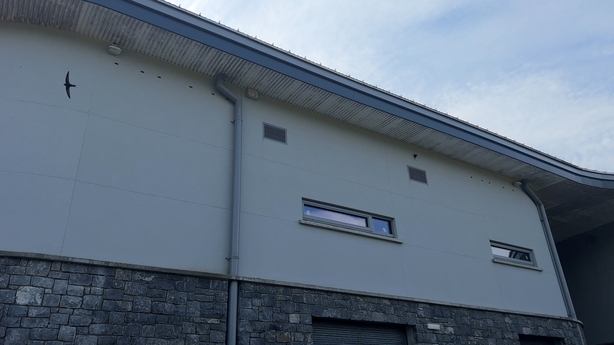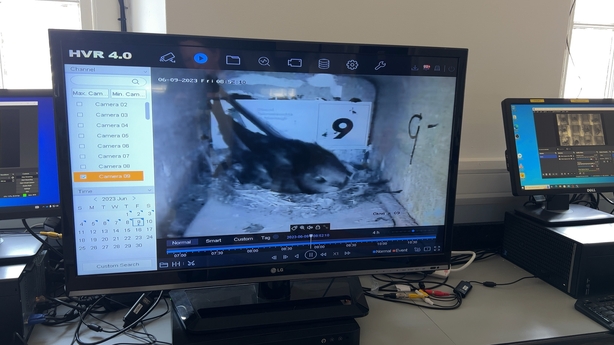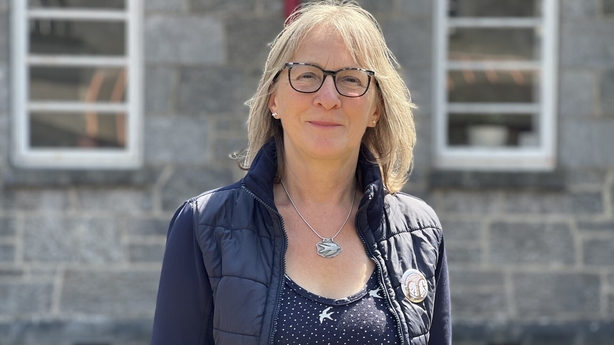Nesting bricks and boxes for Ireland's swift population need to be rolled out nationwide, according to a conservationist leading the fight to reverse the species' decline here.
Swifts fly to Ireland from Africa at the end of April to breed.
However, numbers here have declined by over 40% in the last 15 years and the species is on Ireland's red list of endangered birds.
There are thought to be several reasons for the decline.
The impact of climate change is thought to be one, while the decline of the insect population is another.
However, experts believe habitat loss is the biggest problem.

Swifts like to nest high in the nooks and crannies of old buildings, but their favoured spots are disappearing due to renovations, while many modern buildings have no such accommodating details.
"Swifts would have nested naturally in cliff faces and they see our buildings as cliff faces. Modern buildings now are too airtight for them," said Lynda Huxley of Swift Conservation Ireland.
Ms Huxley has successfully campaigned for swift bricks and boxes to be incorporated into several new builds in Co Mayo.
The leisure centre at Castlebar was built to include 23 nest compartments, with 20 occupied this breeding season.
"You can replace a normal cement block with a swift brick. It's an enclosed space," she explained. "The swift enters the nest entrance hole, and they will build their nest at the other end of the block. They can't go anywhere else in the building, so it's a very secure site for them".
There are also nesting compartments installed at Westport Town Hall, Crossmolina Fire Station, and The Mary Robinson Centre in Ballina.
"I know it works," Ms Huxley says. "We have seen a 23% increase in swifts in Mayo. I'm not anything unique, anything special. I just want to help others help the swifts".

In 2012, Ms Huxley established a nesting project with ATU Mayo as part of its green campus initiative.
The 18 nesting boxes each contain a camera so that swift breeding activity can be streamed and studied.
Recordings from several breeding seasons were analysed by ATU Mayo student Jaroslaw Majkusiak for his master's research.
"Ireland is on the fringe of their habitat," Mr Majkusiak explains. "Usually, the situation is the most dire on the fringes. We really want to make sure our data here actually supports our efforts.
"With our research, we proved here that the swifts are doing OK. We know this by the number of eggs laid in each clutch and the number of hatchlings that each pair produces every year."

Through her volunteer forum, Swift Conservation Ireland, Ms Huxley provides education about the swift species and advice on starting a nesting project.
"The nest box must be in the right location, and it has to be at a height," Ms Huxley explains.
"Swifts don't perch. We must make sure when they leave the nest site that they can drop down and get a lift like a hang glider. A chick only gets one chance to fledge.
"After they leave the nest, they can keep flying for up to two to three years until they are ready to make a nest, find a partner, and raise a family.
"I would like to see the Government agree to every public building being built in the country to have swift nesting compartments built in.
"This is where they're breeding. Where they are having their families is actually home. So, we need to ensure that they can breed successfully, because if we don't, the species will disappear."







